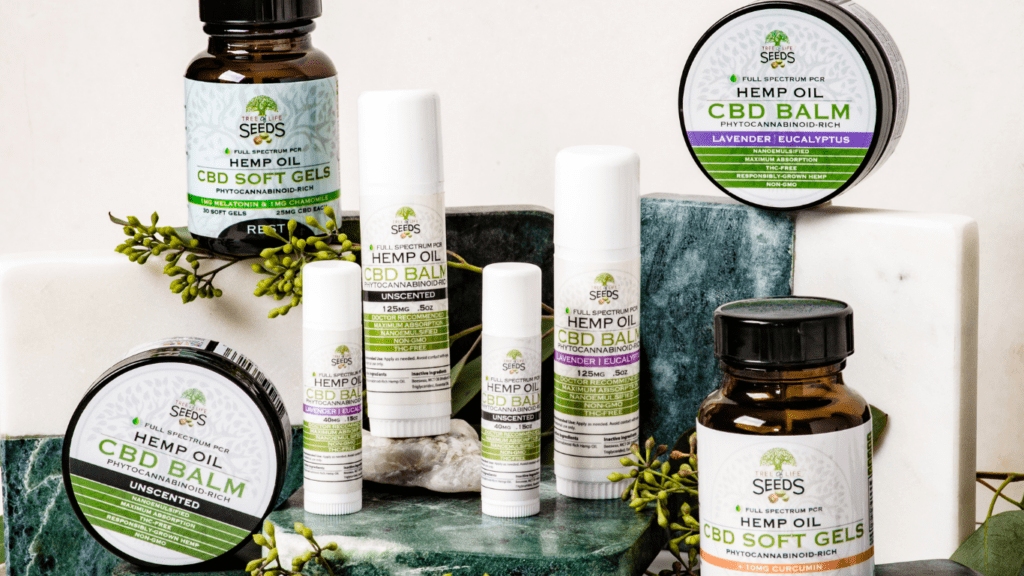Understanding Clean Beauty
Clean beauty focuses on using non-toxic ingredients in product formulations while ensuring ethical sourcing practices. By prioritizing natural and safe components, brands aim to offer products free from harmful chemicals like:
- parabens
- sulfates
- phthalates
This approach not only benefits personal health but also reduces environmental impact.
Transparency remains a key factor in clean beauty. Brands now disclose detailed ingredient lists, allowing consumers to make informed decisions. For instance, many companies publish evidence-backed research supporting their ingredient choices. This openness builds trust and fosters a loyal customer base.
Sustainable packaging is another cornerstone of clean beauty. Many brands adopt eco-friendly materials such as biodegradable plastics, glass, and recyclable metals. By minimizing waste, these companies contribute to a more sustainable future. Examples include refillable containers and minimalistic packaging designs.
Ethical practices extend to production methods within clean beauty. Brands often emphasize cruelty-free testing and fair trade ingredients. This commitment ensures no harm to animals and supports ethical labor practices, which resonates with conscious consumers.
Clean beauty integrates non-toxic ingredients, transparency, sustainable packaging, and ethical practices. This comprehensive approach reshapes industry standards, aligning with the growing consumer demand for health-conscious and eco-friendly products.
The Evolution of the Beauty Industry
The beauty industry has seen significant changes over recent decades. From traditional practices to the rise of clean beauty, it has continually adapted to consumer demands and societal shifts.
Traditional Beauty Practices
Traditional beauty practices often prioritized results over ingredient safety. Brands frequently used synthetic chemicals like parabens, sulfates, and phthalates to enhance product performance. Production processes lacked stringent ethical considerations, with little transparency regarding sourcing and testing methods.
Shift Towards Clean Beauty
The shift towards clean beauty redefined industry standards. Consumers grew more aware of ingredient safety and environmental impact. Brands responded by eliminating harmful chemicals and focusing on non-toxic ingredients. Ethical sourcing and cruelty-free testing became integral. The industry now values sustainability, with innovations in biodegradable packaging and refillable containers, addressing environmental concerns and aligning with eco-conscious consumer values.
Key Principles of Clean Beauty

Clean beauty prioritizes the use of non-toxic ingredients and ethical practices in beauty products.
Natural Ingredients
Natural ingredients form the backbone of clean beauty. Brands often use plant-based components like aloe vera, chamomile, and green tea extract due to their known benefits and minimal side effects. Essential oils such as lavender and tea tree provide natural fragrances without synthetic additives. Transparency in ingredient sourcing from reputable suppliers ensures purity and potency.
Eco-Friendly Packaging
Eco-friendly packaging is essential for reducing environmental impact. Brands are adopting biodegradable materials like paper and cornstarch-based plastics. Refillable containers and minimalist designs help reduce waste. Recycled materials for packaging show a commitment to sustainability, resonating with eco-conscious consumers.
Cruelty-Free Testing
Cruelty-free testing ensures product safety without harming animals. Brands often seek certifications from organizations like Leaping Bunny or PETA to validate their cruelty-free status. Alternative testing methods, including in vitro and computer models, provide humane and reliable results. Use of fair trade ingredients further supports ethical production standards.
Impact of Sustainable Practices
The rise of clean beauty has led to significant sustainable practices within the industry. These practices are influencing various aspects of the environment, consumer health, and the economy.
Environmental Benefits
Sustainable practices in the beauty industry benefit the environment by reducing waste and lowering carbon footprints. Brands are increasingly using biodegradable materials and refillable containers, which minimize landfill waste. For instance, biodegradable packaging helps reduce microplastic pollution in oceans. Switching to renewable energy sources for production also cuts down greenhouse gas emissions. Ethical sourcing of ingredients, such as fair trade and organic farming, preserves biodiversity and reduces soil degradation.
Consumer Health Benefits
Clean beauty products avoid harmful chemicals, enhancing consumer health. Many traditional beauty products contain parabens, sulfates, and phthalates, which can cause skin irritation and hormonal imbalances. By using natural ingredients like aloe vera and chamomile, brands provide safer alternatives. Transparency in ingredient lists allows consumers to make informed choices, reducing the risk of adverse reactions. Moreover, cruelty-free testing ensures that products are safe without compromising ethical standards, which is vital for many conscious consumers.
Economic Implications
Sustainable practices shape the economy in various ways. Brands adopting eco-friendly practices attract a growing segment of eco-conscious consumers, leading to increased sales and brand loyalty. Investing in sustainable technologies and materials may involve higher initial costs, but often results in long-term savings through efficiency and reduced waste. Companies can also benefit from certifications and labels that highlight their commitment to sustainability, enhancing their market position and opening up new business opportunities.
By integrating these aspects, brands not only meet consumer demand but also contribute positively to the environment and society.
Leading Brands in Clean Beauty
Several brands have set the standard in clean beauty, leveraging sustainable practices to shape the industry landscape. Below, I explore key brands at the forefront of this movement.
Pioneer Brands
Several established brands have played a crucial role in advancing clean beauty.
- Tata Harper: Known for using 100% natural and non-toxic ingredients, Tata Harper offers luxury skincare products manufactured on their Vermont farm. They practice sustainable farming and eco-friendly packaging to reduce their carbon footprint.
- Drunk Elephant: This brand avoids what they term the “Suspicious 6,” including silicones, SLS, and essential oils. Drunk Elephant prioritizes ingredient transparency and sustainable practices with recyclable packaging.
- Herbivore Botanicals: Herbivore emphasizes natural ingredients and ethical sourcing. They use glass and paper packaging to minimize waste and avoid synthetic preservatives and dyes.
Emerging Startups
Many startups are emerging with innovative approaches to clean beauty.
- Ritual: Founded on principles of transparency and sustainability, Ritual focuses on clean, clinically-backed ingredients. They use eco-conscious packaging made from post-consumer recycled materials.
- Kjaer Weis: This brand combines luxury with sustainability, offering refillable makeup products. They use certified organic ingredients and sustainable packaging, promoting a zero-waste approach.
- BYBI Beauty: BYBI incorporates sustainable practices, including carbon-neutral shipping and biodegradable packaging. They utilize upcycled ingredients, reducing waste and promoting circular beauty.
These brands exemplify how clean beauty is transforming the industry through sustainable practices and consumer-focused transparency.
Challenges and Future Directions
The rise of clean beauty brings both challenges and exciting opportunities for the industry. As consumer demand for sustainable practices grows, companies must navigate various obstacles to meet these expectations.
Regulatory Hurdles
Navigating regulatory requirements presents significant challenges for clean beauty brands. Countries have different regulations regarding ingredients and labeling. For example, the EU bans over 1,300 chemicals, whereas the US restricts fewer than 30. This disparity complicates product formulation and compliance for brands operating in multiple markets.
Certifications like USDA Organic and COSMOS are essential for validating clean beauty claims. However, obtaining these certifications can be time-consuming and costly. Brands must meet stringent criteria to qualify, often requiring substantial investment in research and development. Balancing compliance with innovation remains a critical challenge for the industry.
Innovations in Clean Beauty
Innovations in clean beauty drive sustainable practices forward. One notable trend is the development of biodegradable packaging materials. Companies like Seed Phytonutrients use paper bottles that decompose easily, reducing landfill waste.
Advances in biotechnology also play a crucial role. For instance, brands are using lab-grown ingredients, such as cultured collagen, to replace traditional animal-derived components. This reduces the environmental impact and aligns with cruelty-free principles.
Digital tools aid transparency efforts, helping consumers make informed choices. Apps like Think Dirty allow users to scan product barcodes to get information about ingredients and their safety. This empowers consumers and emphasizes the importance of clean beauty.
Sustainable practices and innovative solutions position the clean beauty industry for continued growth. As brands overcome regulatory obstacles and embrace new technologies, they meet the evolving demands of conscious consumers, shaping the future of beauty.





